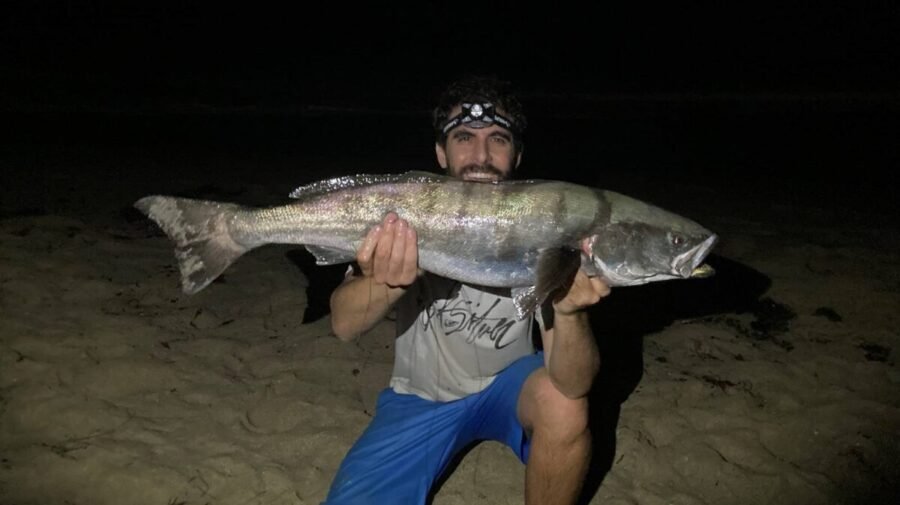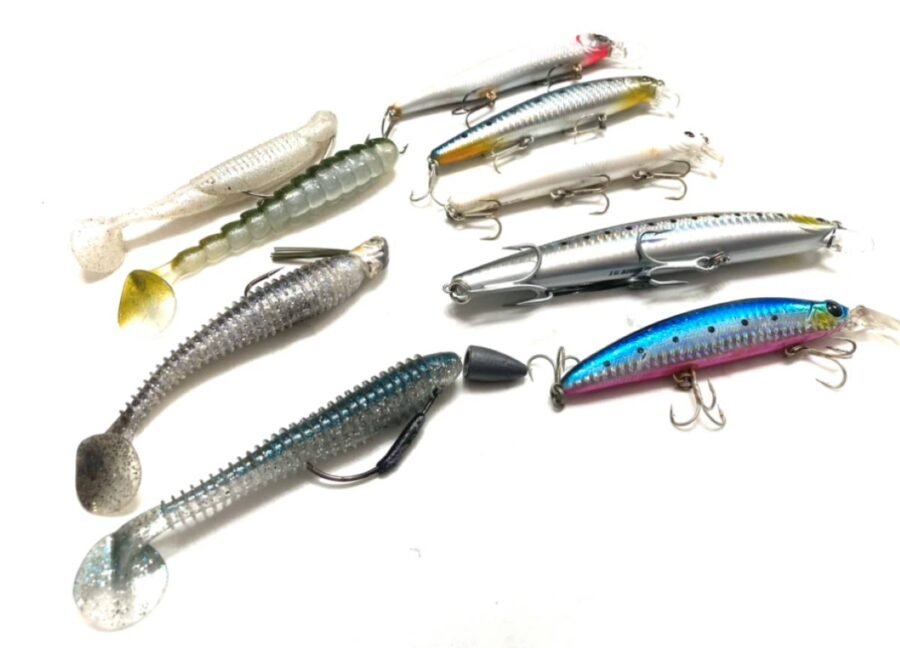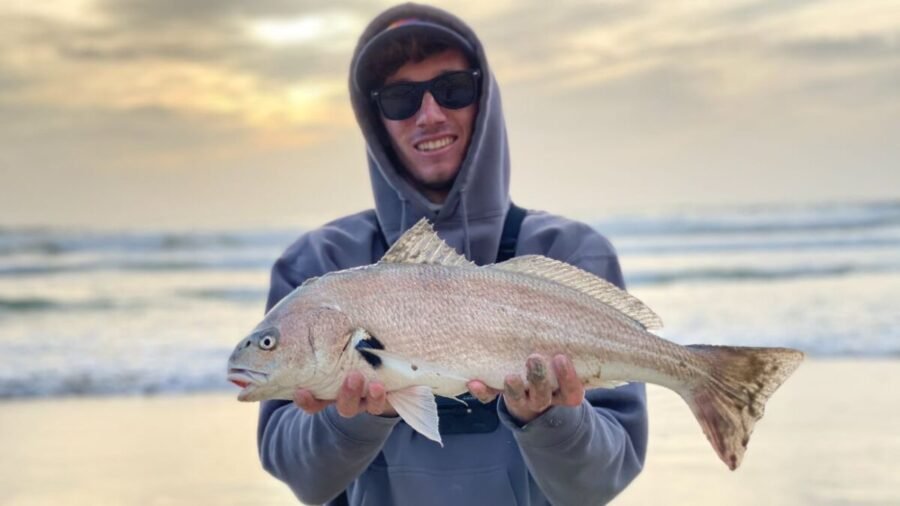5 Tips for Surf Fishing Through Seaweed
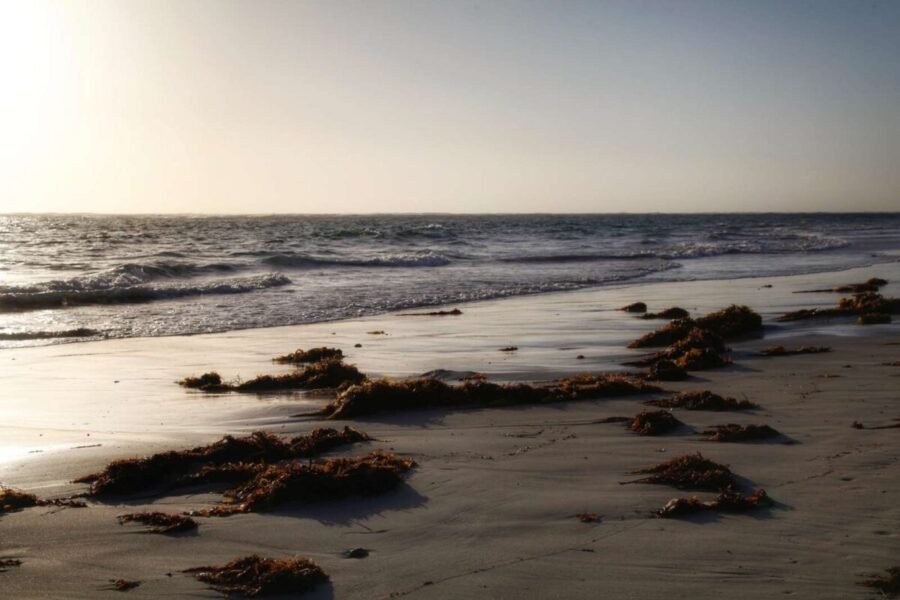
In surf fishing, you can plan all you want, but one factor that remains is seaweed. There’s no real “forecast” for where seaweed will be and when. The best predictor we have is the weather and current, but even then, there’s little to no preciseness.
When waters warm, kelp and seaweed dies off and gets churned up as swell increases. Usually, resulting in some tough surf fishing conditions. In this article, I’ll point out 5 keys to fish through the seaweed successfully.
#1 Change Your Rig or Lure
The first key to fishing successfully through seaweed and kelp is to determine which surf fishing rig is the best option for the condition set. if you’re fishing with bait, the Carolina rig is a good choice. It’s not “weedless” by any means, but it’s simple and streamline. If you’re fishing with lures, the Texas rig should be your go-to.
Carolina Rig
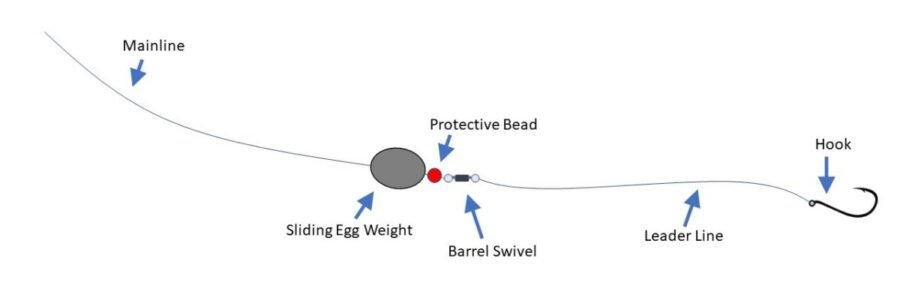
This is the most common rig used along the west coast when it comes to surf fishing with sand crabs. If you’re unfamiliar with how to make a Carolina rig, I’ve provided an article (linked) and the materials below.
Necessary Tackle for the Carolina Rig:
- Weight: half-ounce to 1-oz egg weight
- Bead: craft beads or fishing beads
- Swivel: 19mm barrel swivels
- Leader Line: 15-pound fluorocarbon
- Hook: size #2 or #4 owner mosquito hooks
How To Tie a Carolina Rig: video
Another option to help make the Carolina rig more weedless is to replace the egg weight with a bullet weight. If you thread the bullet weight onto your line with the point facing your mainline (in the direction you would retrieve), you’ll be able to shake off weeds more easily.
Texas Rig
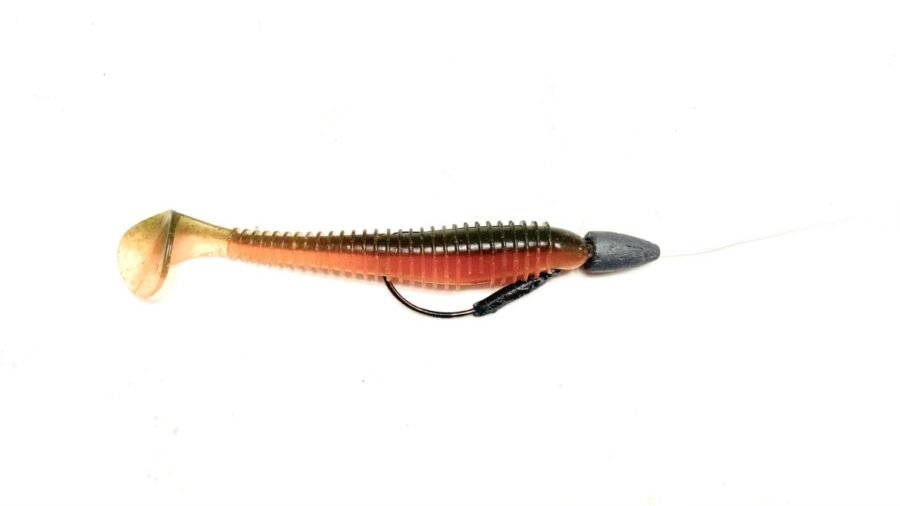
The Texas rig is the definition of a “weedless” rig. It’s a simple rig including a bullet weight and a swimbait on a hook. You also have the option of using a simple jighead with a weed guard, but over the years, I’ve come to prefer the Texas rig for surf fishing with lures in general, and especially in and around kelp or loose weeds.
#2 Cast Placement
As we learned last week with regards to sight casting, cast placement is critical within all things fishing. There are a few things to keep in mind when placing your casts while surf fishing through seaweed.
Avoid Visible Seaweed
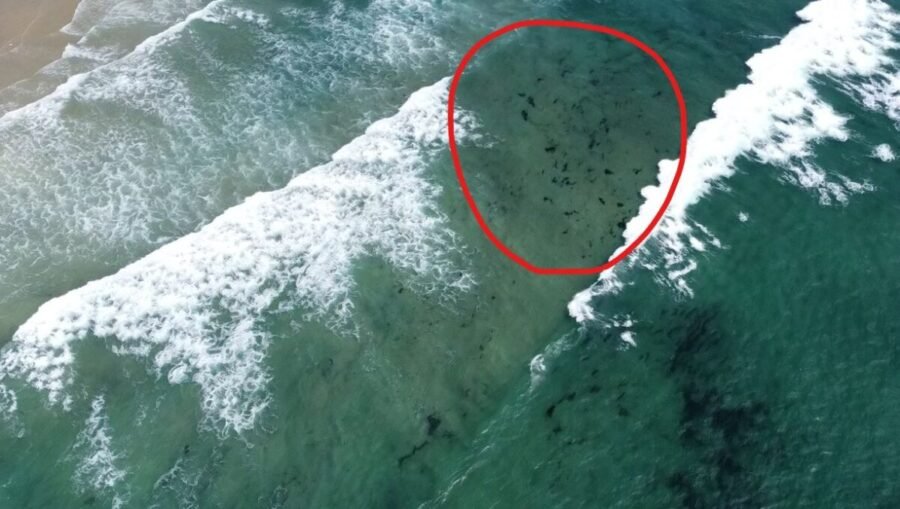
The first tip within casting placement is simple. Avoid casting into any visible seaweed. the only time you would ever want to fish into “seaweed” is if you were fishing a Texas rig into a kelpy area like a kelp patty or kelp bed that’s attached to reef and actively growing. Depending on the type of kelp, these zones can often allow your lures to slide right through the vegetation, making for a perfect ambush opportunity from kelp bass and similar species.
In the image above, you can see the area circled in red has some visible seaweed you’ll want to avoid when casting. The bummer about this is that often, troughs and holes will accumulate the most seaweed, especially if they coincide with a rip. This is the case in the image above. You can see the lack of a crest in the area where the seaweed is. Hang out a bit, see if the seaweed passes through. If it does, great, if not, find another spot.
Other than the perfect scenario kelp bed fishing with lures, you want to avoid casting into loose kelp or seaweed whether you’re fishing with bait or lures. If you see dirty water, or a dense patch of weeds or kelp, avoid it best you can. It’s that simple. Whether this means walking to a spot 50 yards down the beach, a mile down the beach, a new beach altogether, or simply casting a few feet to the left, avoid casting into visible seaweed.
Cast Short
The second tip with regards to cast placement is the distance which you cast. Sometimes there’s a visible, notable weedline. It might be further out, it might be gathered in the first 10 feet of the shoreline and then clear up just past it. Other times, it’s just everywhere.
If there’s no visible seaweed line, or if the seaweed line begins further out, casting short will help keep weeds off your line, help keep your line out there longer, and help you hook up more often.
The more line you have in the water, the more opportunity seaweed has to build up on your line. I’ve had some incredibly successful days fishing what appears to be terrible, filthy, weedy conditions. How? Typically by not throwing my bait too far, and working with what I have available to me. This is true for both bait and lures.
Bait
With bait, find those holes close to shore, fish will come extremely shallow at times, so take advantage of that. Maybe try a little sight casting too.
Lures
With lures, your strike zone is limited to where your lure runs clean. If you cast far out and accumulate weeds before hitting that strike zone… you have no strike zone. So suck it up and cast short so you’re running 100% clean through the best areas.
So what if there’s a visible seaweed line, but its coating the first 10 or 20 yards of the shoreline? That’s where wading comes in.
#3 Watch and Wade
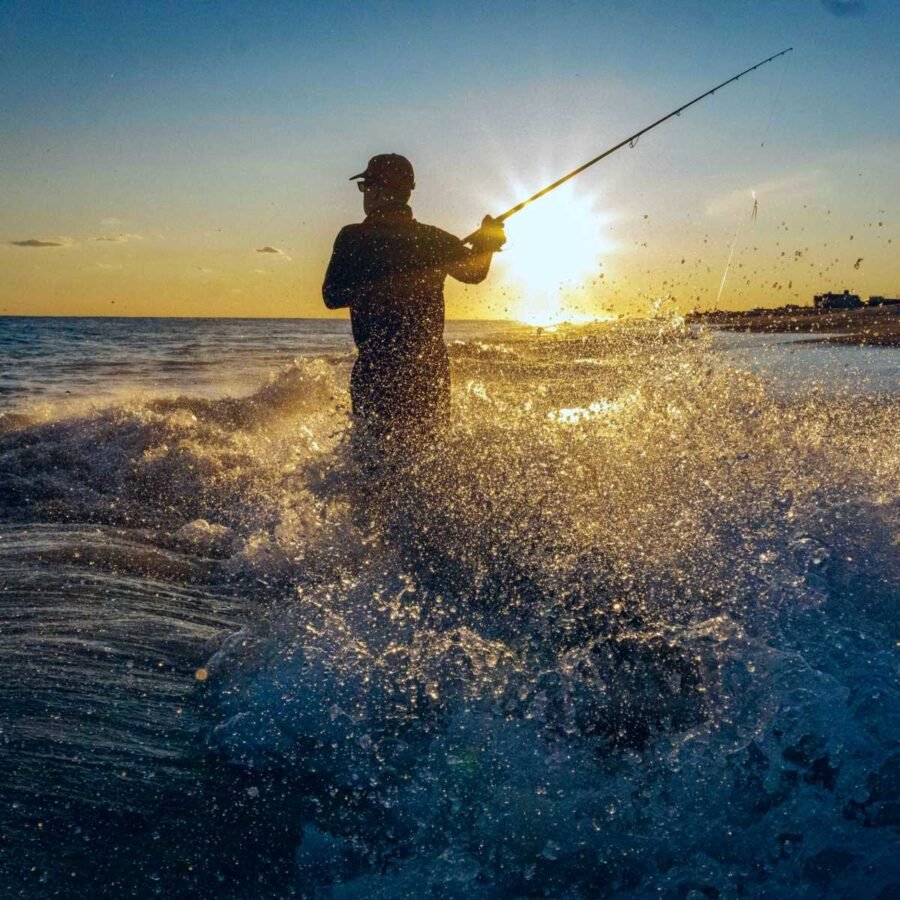
By wading, you actually do a few things for yourself that can help you to catch more fish. If you can wade out far enough to reach clean water, great. That’s a no brainer. Sometimes you’ll just barely reach it though. If this is the case, whether fishing a lure or bait, keep your rod tip high, and try to avoid the turbulent water closest to where your line enters the water.
Watching your line and seeing where it enters the water is crucial when surf fishing through seaweed and heavy kelp conditions. Not only will that nearshore turbulent water throw kelp and seaweed onto your line, it will also interfere with the level of tension you can keep. Tension is important when fishing bait because, you need to feel the bite. For lures, the same is true, but additionally, tension allows you to retrieve properly, and put the right twitches and movements on your lure while maintaining the desired depth.
#4 Control the Depth of Your Lure
This tip is obviously strictly geared toward lures. If we’ve recently had really rough conditions and seaweed was thrown about, often times seaweed settles near the bottom when conditions start to improve before the kelp clears out. If this is the case, keep your lure above the seaweed as much as possible. Obviously, you’d like to get it as close to the bottom as possible as that’s where most fish are hanging out, but get a feel for a clean depth, and ride that.
#5 Timing
Lastly, we have timing. Whether the surf is rough or decent, it’ll help to time you cast just after a wave passes. Ideally, you’ll wait, watching the size of the sets until you see the last of a big set of waves pass by. As that wave passes by, you’ll have an opportunity to cast into the calmest water for the next few seconds or even minutes.
Calm water is always easier to maneuver when it comes to surf fishing through seaweed. It will be easier to see loose kelp and there will be less of a chance that the seaweed moves over your line or vice versa.
